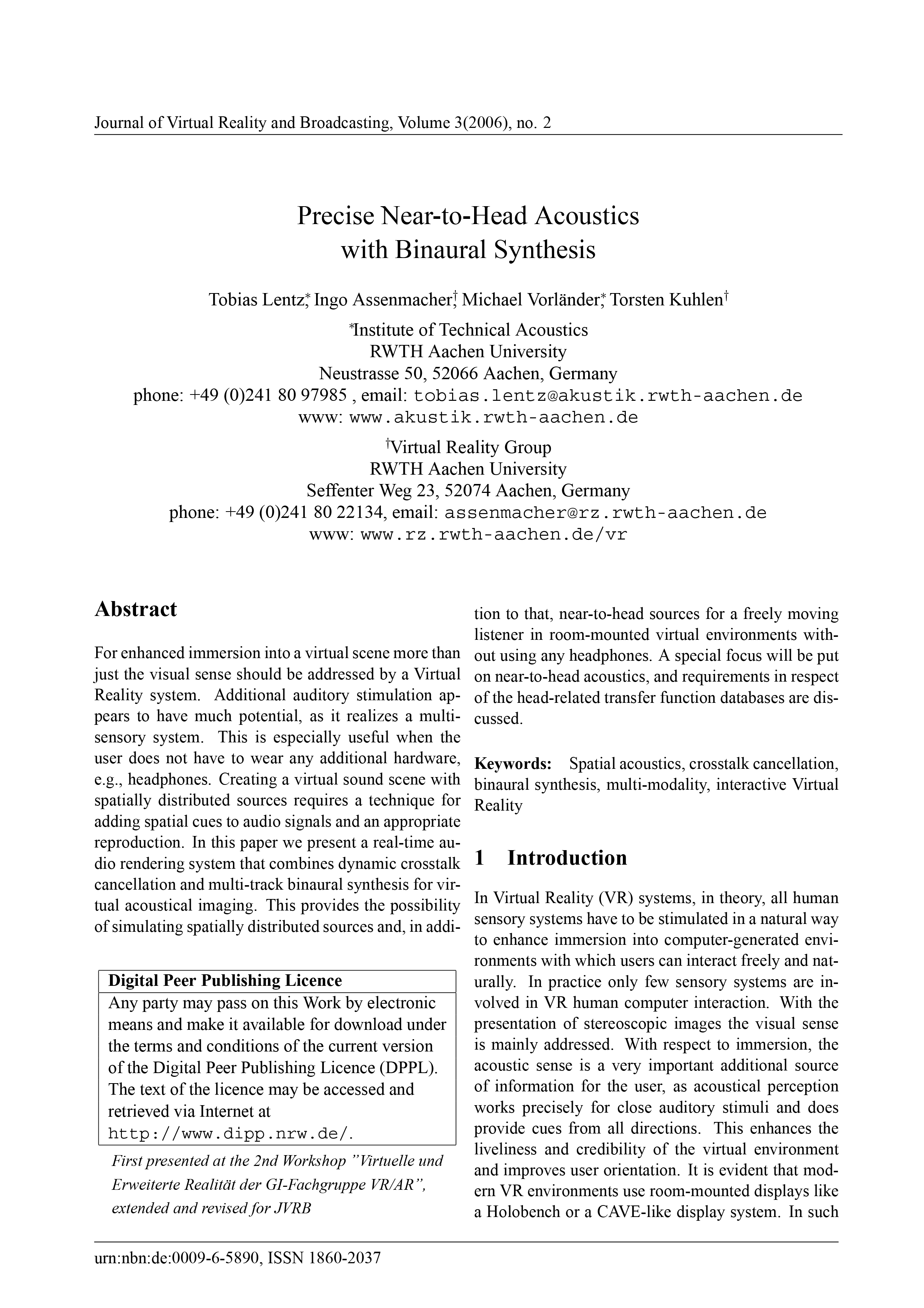Precise Near-to-Head Acoustics with Binaural Synthesis
DOI:
https://doi.org/10.20385/1860-2037/3.2006.2Keywords:
Crosstalk cancellation, Spatial Acoustics, binaural synthesis, interactive Virtual Reality, multi-modalityAbstract
For enhanced immersion into a virtual scene more than just the visual sense should be addressed by a Virtual Reality system. Additional auditory stimulation appears to have much potential, as it realizes a multisensory system. This is especially useful when the user does not have to wear any additional hardware, e.g., headphones. Creating a virtual sound scene with spatially distributed sources requires a technique for adding spatial cues to audio signals and an appropriate reproduction. In this paper we present a real-time audio rendering system that combines dynamic crosstalk cancellation and multi-track binaural synthesis for virtual acoustical imaging. This provides the possibility of simulating spatially distributed sources and, in addition to that, near-to-head sources for a freely moving listener in room-mounted virtual environments without using any headphones. A special focus will be put on near-to-head acoustics, and requirements in respect of the head-related transfer function databases are discussed.
Published
2006-08-23
Issue
Section
GI VR/AR 2005





